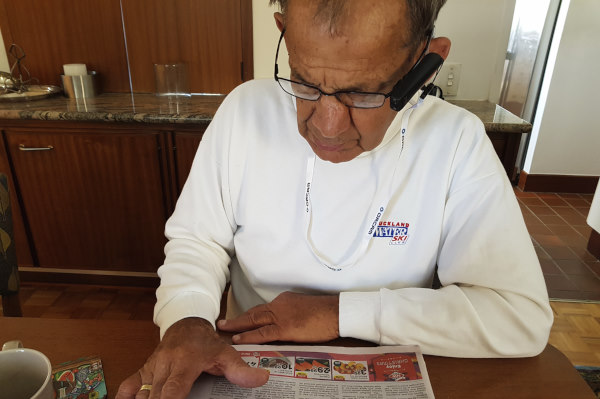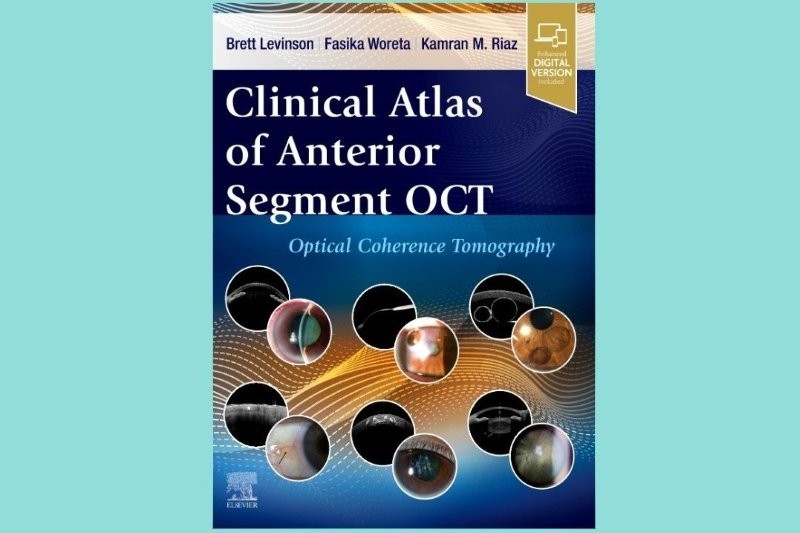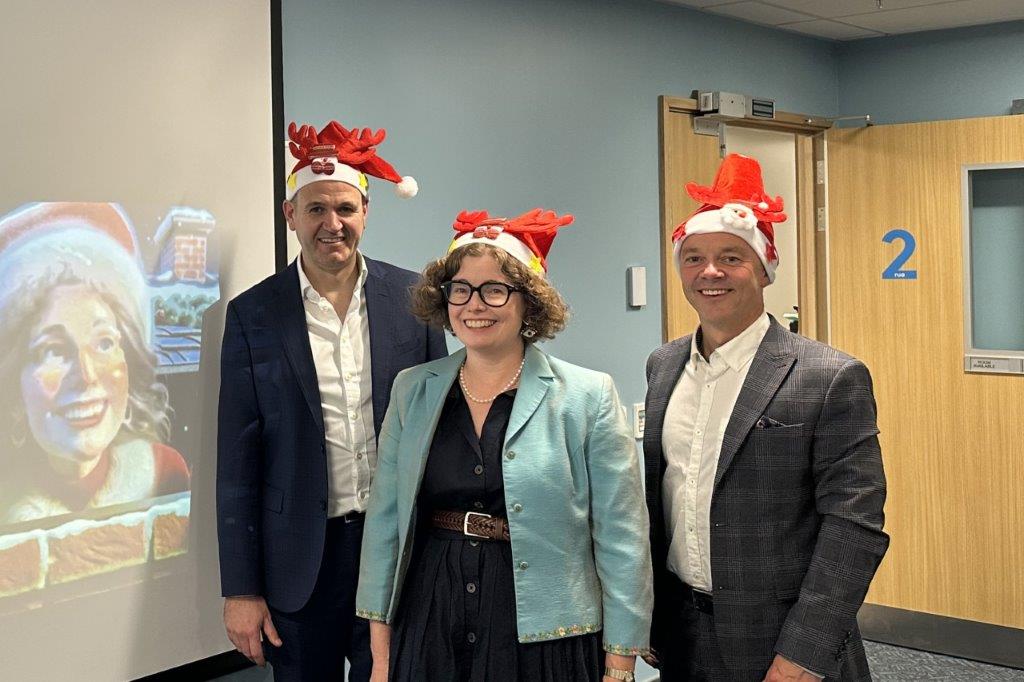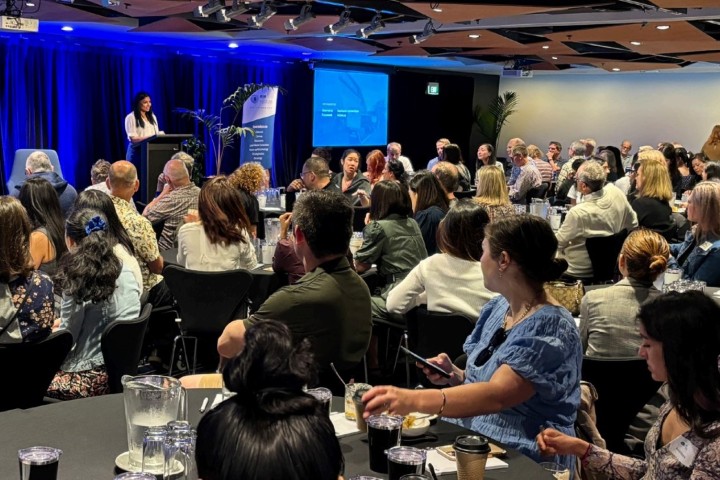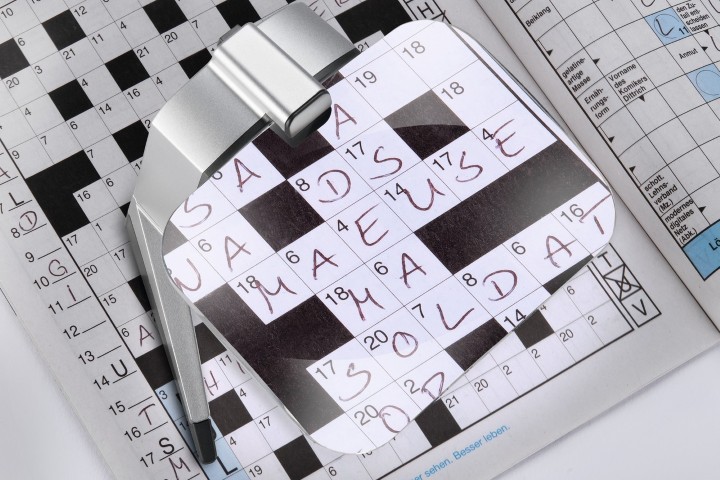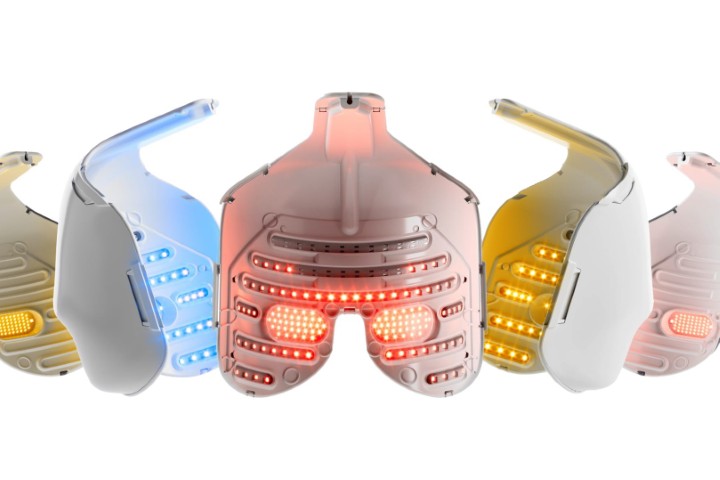Low vision tech updates
I really thought when I was introduced to version 1 of the Orcam wearable text-to-speech reader two years ago, I had seen the ultimate in technology for people with low or no vision. Then came version 2 and we shifted to a different level again.
The most obvious improvement in the new version is the umbilical cord from the head unit to the hand-held controller has been entirely removed. Everything is now compacted into the tiny Orcam unit, about the size of a thumb, which attaches to the wearer’s spectacle temple by magnets. The only cord is the lanyard provided to prevent the wearer dropping Orcam when it’s taken off. Unfortunately, however, the on/off button is now sitting flush with the inside of the unit so Orcam does need to be taken off the frame to activate it.
As before, the camera is at one end and sound is delivered from the other end. The outer side has the addition of a touch bar, which can be tapped or swiped forward or backward to control Orcam, in addition to or instead of using hand gestures, as per the earlier model, or voice commands.
Orcam can decode and read a database of barcodes for everyday products. If a barcode isn’t recognised, it will say “unfamiliar barcode” or try to read the barcode as a number giving the wearer the option to teach Orcam to recognise that product. It also has much more reliable colour detection than the earlier model and can still tell the wearer the time and date, identify bank notes and be taught to recognise faces. It can be quite flattering when it tells my client, “there is a young woman in front of you”, but not so amusing when it gets it wrong and identifies me as, “an older male”!
A patient’s perspective
The addition of automatic LED illumination when there’s insufficient light levels for the camera to capture the text is also a big improvement for my patient Ronny Bruell.
Ronny has Usher’s syndrome. He has struggled with his vision since he was about seven years old and his parents noticed he seemed to walk into things. A trip to Auckland city to the ophthalmologist reassured them there was, “nothing wrong; just typical of a second child competing for attention”. Ten years later, Ronny recalls, he was driving in daytime through the Mt Victoria tunnel in Wellington without realising it was, in fact, a tunnel. After further consultation with the same ophthalmologist, it was suggested Ronny’s sight was affected by a lack of liver. Thus followed corneal injections every Friday. Surviving this terrifying experience, Ronny continued to study, have a career, travel and make frequent visits to a clinic in Switzerland which specialised in retinitis pigmentosa. On his last visit he was told “everything is fine, but you know you are going blind. Sorry I don’t have time to talk about this now. See you next time and we can talk about it then”.
Fortunately, Ronny has always been an early adopter of technology. He received one of the first cochlear implants in New Zealand, while his first Orcam gave him an additional level of independence in his many varied activities. Typical of Ronny’s sense of humour, he insists Orcam helps him to identify the correct bottle from the drinks cabinet without having to taste them all each time!
Joking aside, with no sight at all, Ronny struggled with his first Orcam because he could not tell whether the light was on or which direction the light was coming from. This frustration has been resolved in version 2 because the flash is now integrated with the camera.
I am, however, less enthusiastic about the packaging of the latest Orcam or the clarity of instructions, both of which seem to have become too esoteric for the average person. That said, this new version is incredibly intuitive, once initial training has been mastered.
eSight
A year after the introduction of eSight to our shores, I continue to be impressed by its versatility as a wearable low vision aid with the ability to zoom magnification from 1.2 – 24x and improve contrast enhancement. It does lose definition at higher magnifications and head movements are also magnified, both of which are an issue for some people. Having completed a number of assessments now, my feeling is eSight is a life-changing technology for some people, but definitely not a magic switch that solves all problems. I believe eSight is most suited to younger adults who are actively engaged in work or study and have central visual loss.
Now, if we could combine the magical artificial intelligence of Orcam with the optical properties of eSight, in a lightweight unobtrusive device like the new Orcam v2, we would really be rocking, in a good way!
Optometrist Naomi Meltzer is a low vision specialist and consultant, a qualified CentraSight and eSight assessor and OrCam trainer, and an authorised agent for Orcam and eSight in New Zealand.










